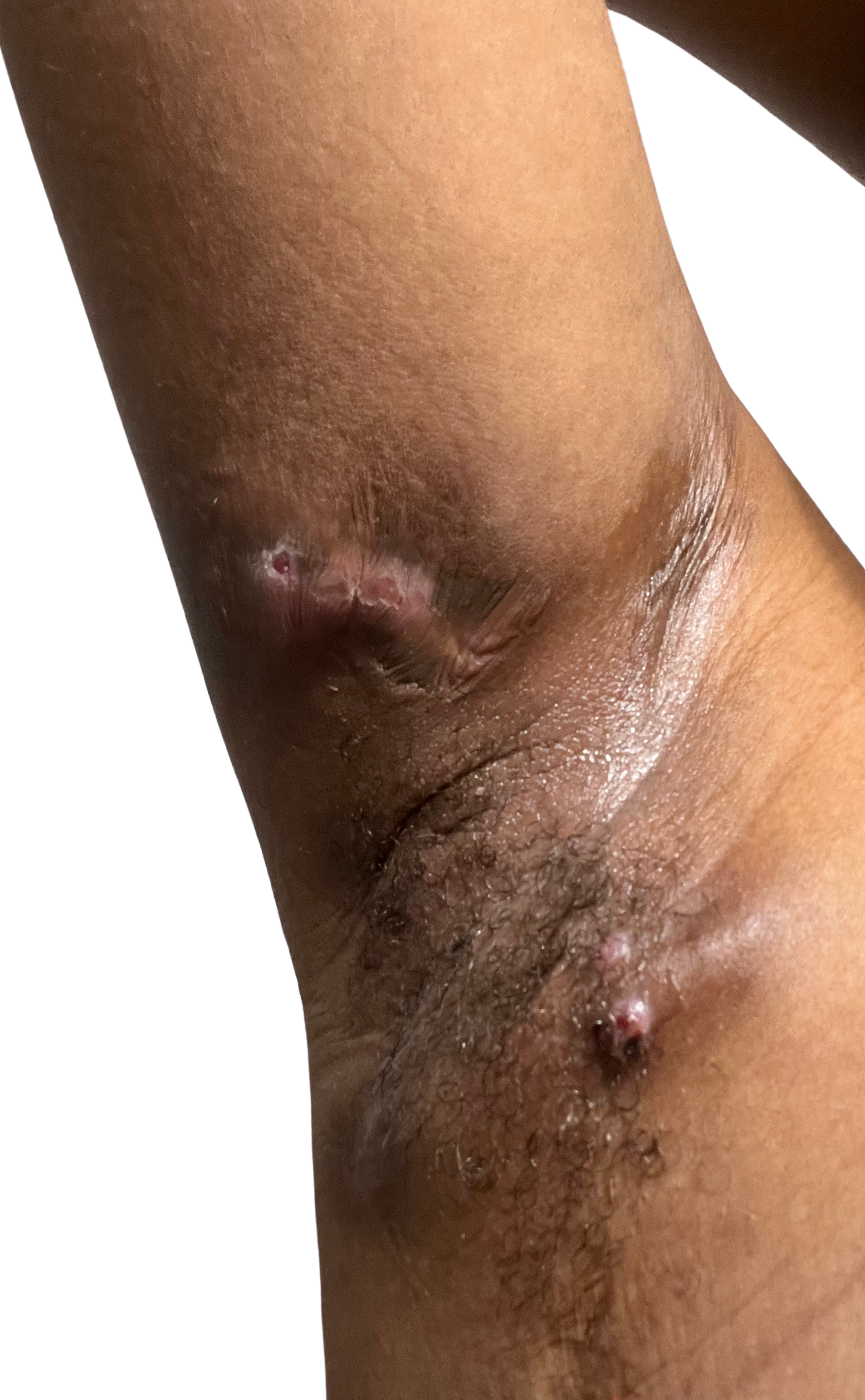
A Closer Look at Detroiters’ Journeys with HS
Hidradenitis Suppurativa (HS) is more than a condition—it’s a deeply personal journey that affects each individual differently. This section explores the lived experiences of survey respondents, including how long they’ve had symptoms, where HS appears on their bodies, Hurley stage, and any other illnesses they manage alongside hs.
Each data point represents a real person — A Warrior in their own battle of self love, healing, & understanding this debilitating condation — generously helping us gain insight into how HS has physically impacted them over time and where they are in their experience today.
When did hs warriors’ Symptoms begin?
HS is a chronic, often lifelong condition, but many people live with symptoms for years before receiving a diagnosis. What begins as unexplained pain, abscesses, or skin irritation is frequently dismissed, misdiagnosed, or treated as temporary, leading to delays in care.
This section explores how long survey respondents have been living with HS symptoms, offering insight into how symptom duration is shaped by factors like age, gender, Hurley stage, and heritage/background. Because HS often begins in adolescence or early adulthood, symptom duration tends to increase with age, revealing the long-term toll of delayed diagnosis and limited access to care. These findings highlight the urgent need for early recognition, timely intervention, and sustained support to improve outcomes for HS warriors at every stage of their journey.
what exactly is hidradenitis suppurativa (HS)?
Hidradenitis Suppurativa (HS) is a debilitating chronic skin condition that produces painful, recurring, deep-seated, boil-like abscesses that may start as pustules (small, pus-filled bumps) or grow to be the size of a golf ball or larger. These abscesses, nodules, or lesions can be painful and release a foul-smelling pus when they burst, impacting daily movement & quality of life.
HS doesn't only appear in areas where skin touches skin. The disease can develop anywhere hair follicles can be found, but hair growth doesn't have to be present for HS to develop. In fact, HS can be experienced in the groin, buttocks, armpits, chest, back, thighs, torso, head, face, and legs. The only places that HS cannot develop are on the palms of the hands, the soles of the feet, or the red part of the lips.
HS severity levels are typically classified as mild, moderate, or severe. Health care professionals may use The Hurley Stage System of severity outlined below.
What Hurley Stage of severity are warriors experiencing?
Because Hidradenitis Suppurativa (HS) severity varies widely, many providers use the Hurley staging system to classify the progression of symptoms from mild to moderate to severe. This section breaks down survey respondents by Hurley stage and explores how severity correlates with age, gender, symptom duration, and heritage/background—shedding light on how different groups experience and navigate HS over time.
The hurley system of hs severity
mild
stage 1
One or multiple isolated abscesses usually without significant scarring or sinus tracts. There can be surface discoloration scarring at stage 1 due to trauma from the abscesses.
moderate
stage 2
Recurrent abscesses, single or multiple widely separated lesions, with scarring and sinus tract formation.
Assigned male at birth
severe
stage 3
Diffuse or broad involvement with extensive scarring and multiple interconnected sinus tracts (tunneling) and abscesses.
Where on their bodies are hs warriors Experiencing flares?
HS can develop in multiple areas of the body, often in painful, recurring flare-ups that impact daily life. This section examines the most common HS locations among survey respondents and compares how affected areas vary by age, gender, symptom duration, and comorbidities. Below is a diagram highlighting the most frequently reported HS locations that we based our survey questions on.
The diagrams below illustrate the most frequently affected areas based on pre-existing medical research and insights from HS specialists—not from our survey data. However, we wanted to go beyond established knowledge and hear directly from our respondents about their unique experiences with HS. The images below show the areas where HS most appears on Men or people assigned male at birth and women or people assigned female at birth. Many respondents selected multiple areas affected by HS, showing that HS commonly affects more than one location. Our survey options were gender neutral to assess the most commonly affected areas across all respondents.
Assigned female at birth
What Comorbidities are HS Warriors managing?
Many individuals with Hidradenitis Suppurativa (HS) also experience additional health conditions, known as comorbidities, which can complicate treatment and overall well-being.We now know that 19.8% of respondents reported that they face additional health challenges beyond HS. This section offers a detailed analysis of the specific comorbidities impacting the HS community, highlighting:
Prevalence of Comorbid Conditions: Focusing on the frequency of inflammatory, autoimmune, metabolic, and chronic pain disorders.
Impact on Treatment and Well-being: How these comorbidities influence treatment strategies and quality of life.
Insights into Health Challenges: Understanding the broader health landscape to enhance comprehensive care approaches.
By examining these aspects, we aim to underscore the complex interplay between HS and other health issues, emphasizing the importance of a multidisciplinary treatment approach.







